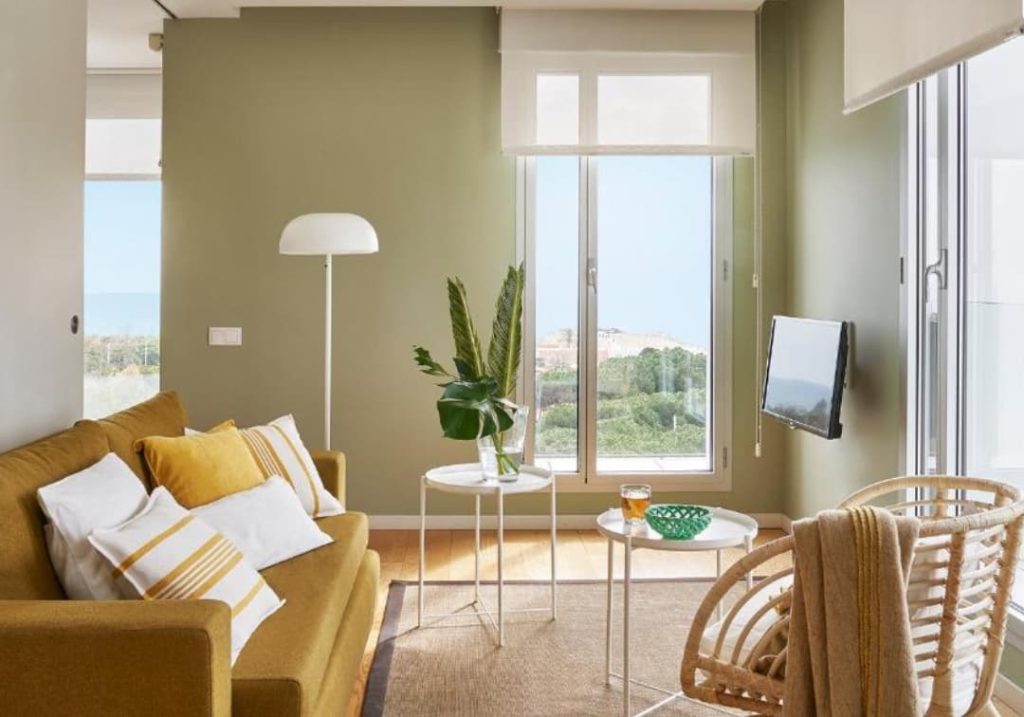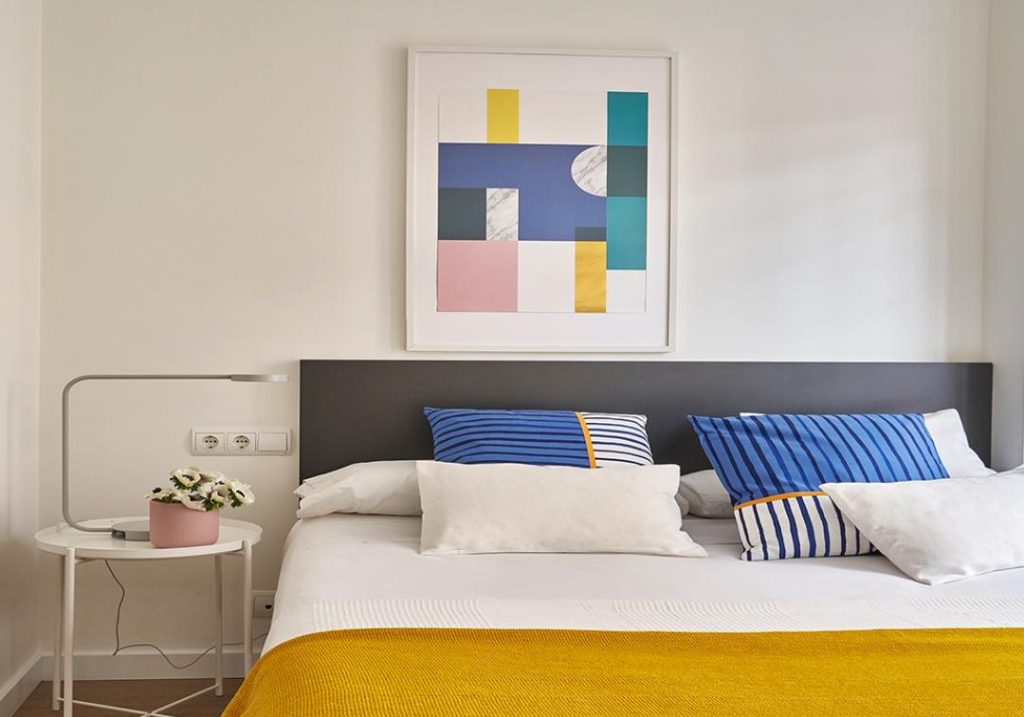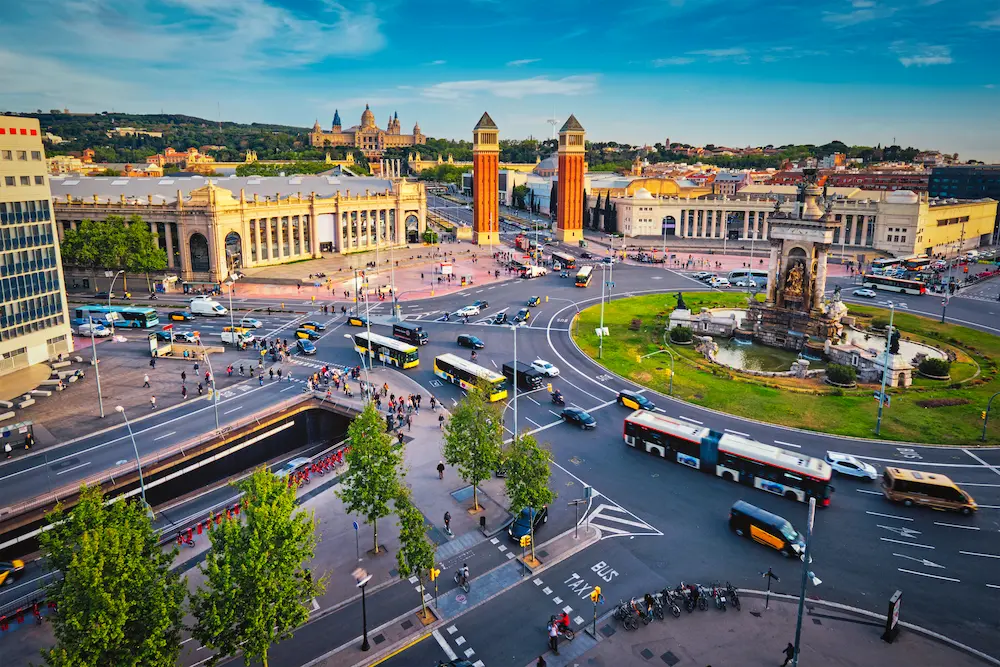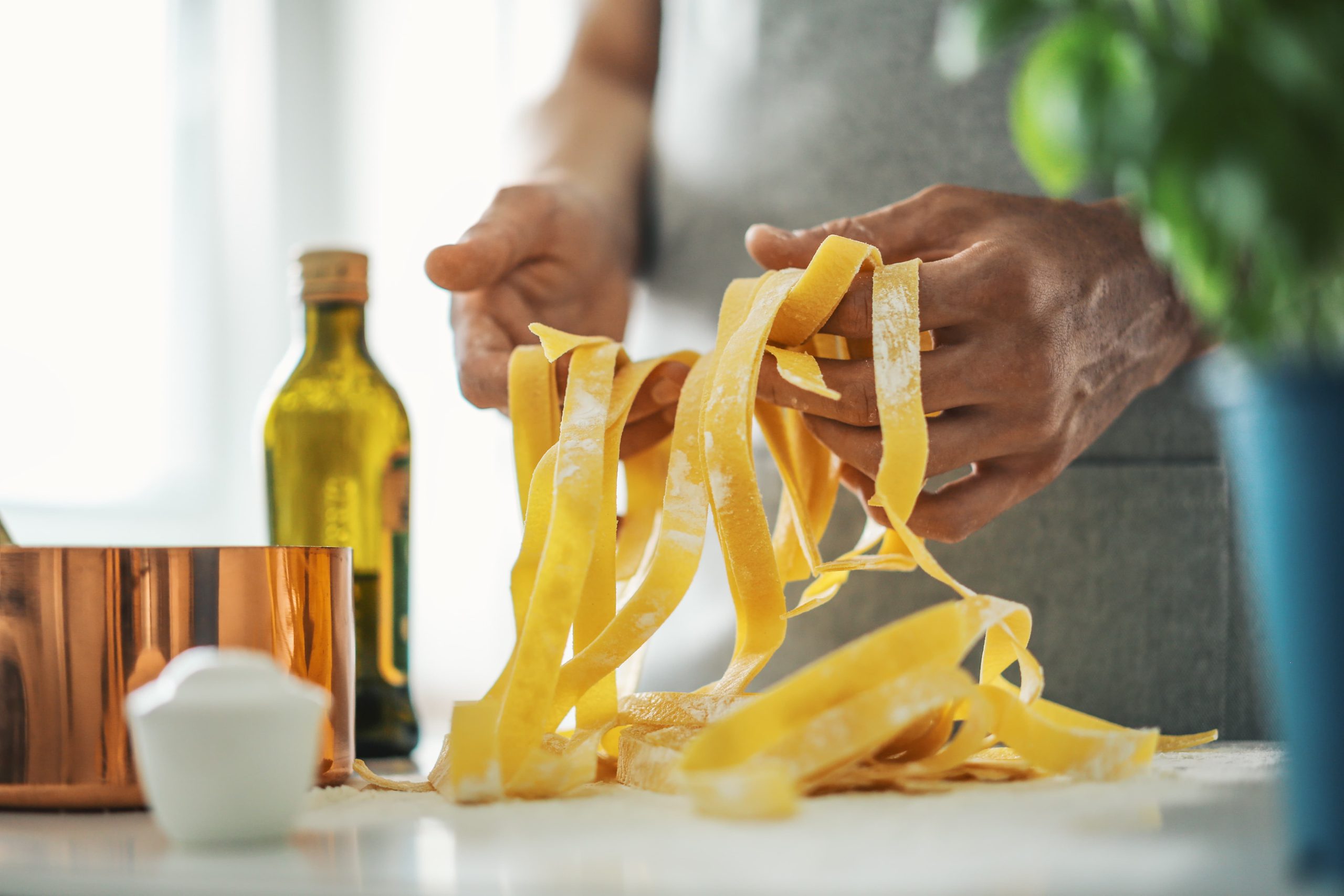The Middle Ages were as convulsive as splendorous for the capital of Catalonia. The Roman Barcino resisted the Muslim invasion to become a county city once the Carolingian Empire was established. It was Wilfred the Hairy (Guifré el Pilós) who, when the previous superpower broke down, initiated the lineage of the house of Barcelona, which became the main county of the Catalan counties, opening an era of commercial growth and political relevance for the city.
In this way, the growth of medieval Barcelona led to the construction of many new buildings outside the Roman walls, some of which are still standing today. If you love history and want to discover the monuments of the Middle Ages that this city hides, read on to learn more about the medieval buildings of Barcelona.
TOUR OF MEDIEVAL BARCELONA STREETS
The Roman city of Barcino soon became small for the Barcelonians of the Middle Ages, so Barcelona grew outside the walls where, at that time, everything was countryside. However, most of the local activity was still in the center, so if you are looking for a tour of medieval Barcelona streets, you will still find them mostly in the Gothic quarter, although a large part of the buildings in this neighborhood are not from this era.
Call jueu
You may not know that most of the buildings that are in the Gothic quarter of Barcelona are not originals of the medieval era. Because of the destruction of much of the old city during the War of Succession in 1714, many of them were totally or partially destroyed. However, many of the remains of that era were used in a reconstruction of the neighborhood at the end of the 19th century to shelter the Gothic monuments that were still standing to attract tourists, which is why most of the buildings in the area were rebuilt in neo-gothic style.
However, the streets surrounding the Jewish quarter do preserve the essence of the religious community that lived in this part of the city until 1391. Thus, in carrer Marlet you can discover the remains of what is believed to be one of the oldest synagogues in Europe (3rd century AD), while at number 6 on the street of Sant Domènec del Call you will find the oldest house in the city (12th century). Right on the corner of this street, there is also Palau Fivaller, built in the 16th century by the family of the same name, when the Jews had been banished from Barcelona for almost two centuries
Plaça del Rei
Another corner of the Gothic quarter with true medieval essence is the Plaça del Rei, where tournaments were held in the 14th century. Its name was given because the Palau Major is located here, residence of the counts of Barcelona and kings of the Crown of Aragon. In this building you will find the magnificent Saló del Tinell, a hall which acted as a room for ceremonies and meetings of the scribes of the time. In the same square we find the chapel of Santa Àgata (XIV century) and, next to it, the small house of the executioner, who lived in the same square where he worked because nobody wanted to live by his side at the time. Much better to stay in our seaview apartments in Barcelona, right?
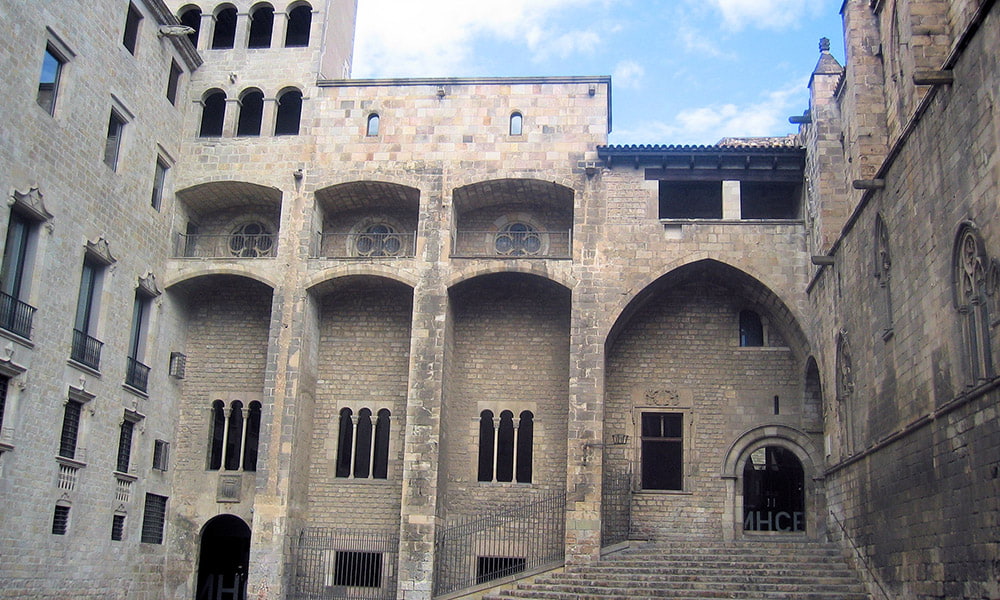
Medieval wall
As we have explained before, the Roman walls became small in medieval Barcelona, so in 1378 the structure built by the Romans was reused to expand the area that frames the current Raval neighbourhood. Today, the only portal that still stands after its demolition in the nineteenth century is the portal of Santa Madrona. The bastion that embraces it, on the other hand, dates back to the 18th century, when a third fortification was built.
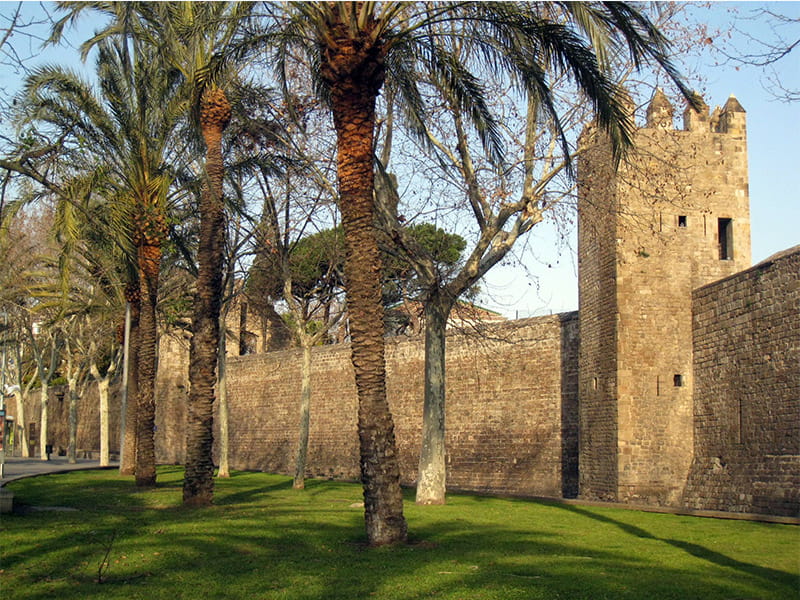
MEDIEVAL CHURCHES IN BARCELONA
Most of the standing monuments of the Middle Ages in the city are for clerical use. Although you can find medieval villages in Barcelona province to get an idea of how life developed at that time, entering these historic religious buildings is very worthwhile.
Royal Monastery of Santa Maria de Pedralbes
King James the Just was the one who, in the fourteenth century, built this monastery of Poor Clare nuns as a retreat for his wife Elisenda once widowed. Currently, the convent is in very good condition, so you can visit its church, cloister, garden of medicinal plants and even Elisenda’s tomb.
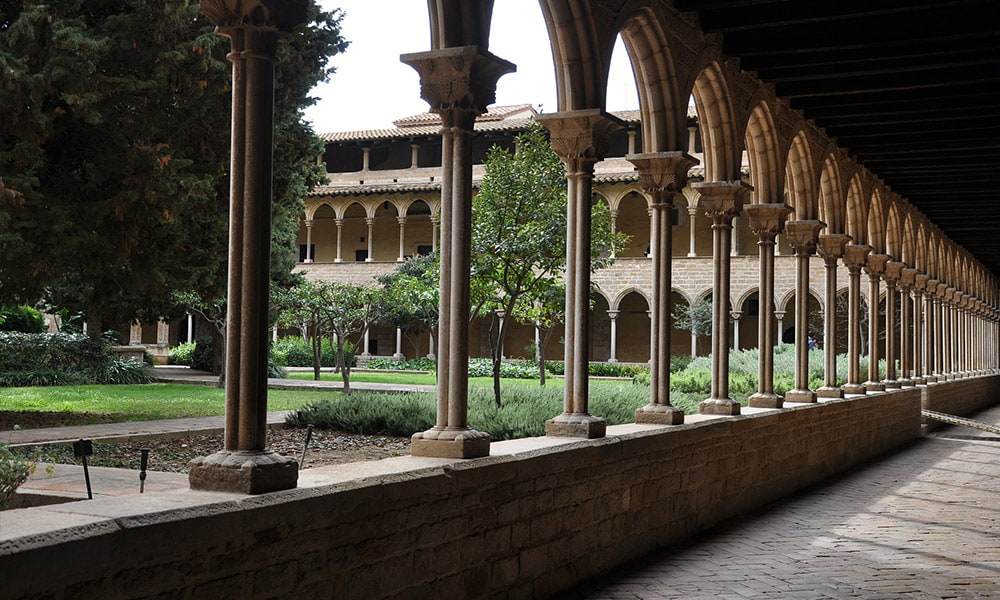
Sant Pere de les Puel·les
This Benedictine monastery was founded in the 10th century by the Counts of Barcelona. Throughout the centuries, it was affected by the Spanish confiscations and a fire at the beginning of the 20th century. What we can currently visit is a restoration of the original Romanesque church that has little to do with the original medieval architecture.
Santa María del Pi
The basilica built in the 14th century is a construction of Catalan Gothic style that boasts the largest rosette in Catalonia. Another of the charms of this medieval church in Barcelona are the great views offered from its bell tower to the rest of the city.
Monestir de Sant Pau del Camp
Although today it is a church, this structure in the Raval neighbourhood was conceived as a monastery in the ninth century. Built in Romanesque style, it is one of the best-preserved witnesses of medieval times in the city of Barcelona.
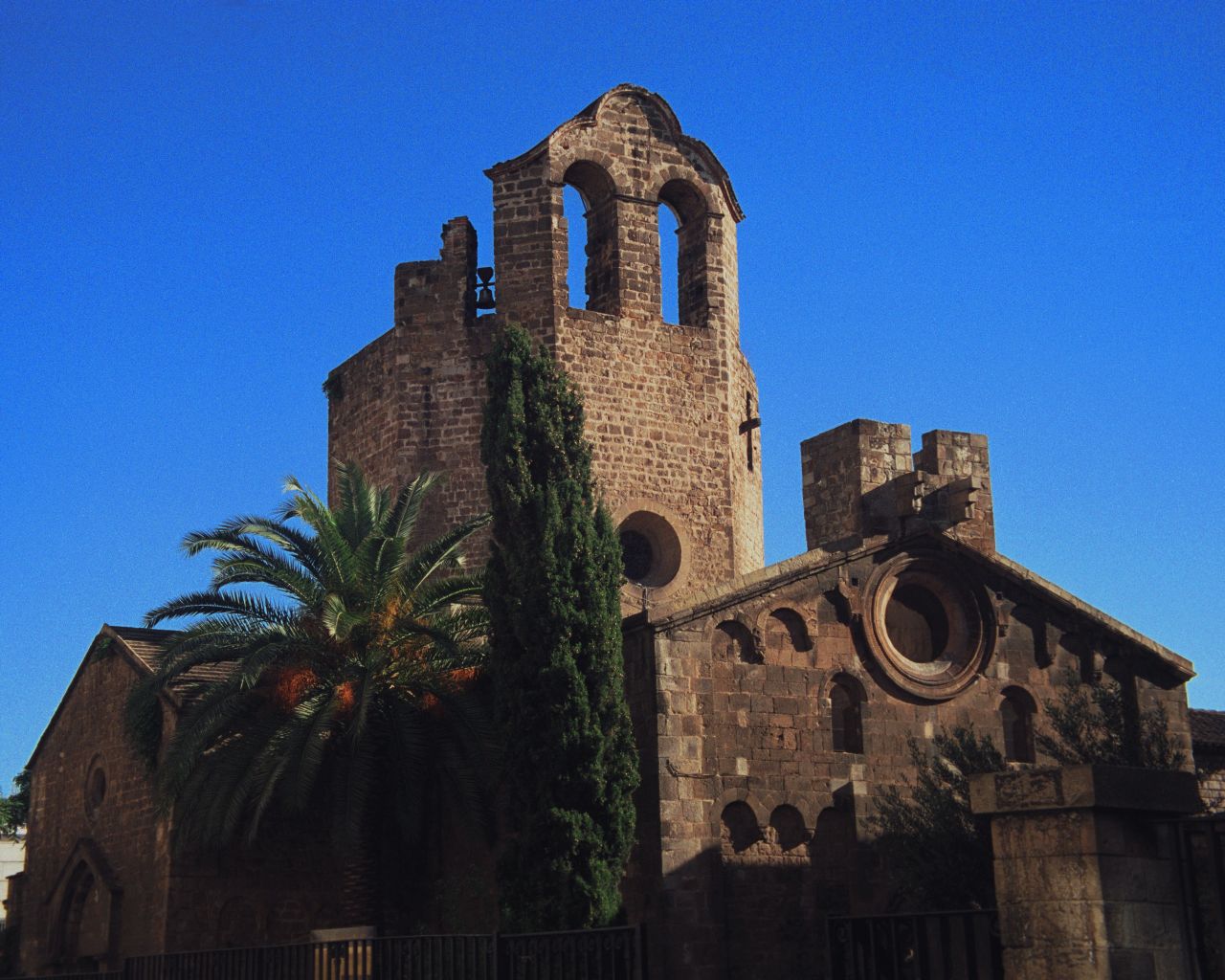
Church of Santa Anna
Hidden near Plaça de Catalunya, the old convent of Santa Anna is a beautiful example of a building created between the Romanesque and Gothic styles. Stroll around its cloister and discover the tomb of the knight Miquel de Boera, captain general of the galleys of Italy and defender of Roussillon during the French invasion of 1543..
Basilica of Sant Just i Pastor
Another Gothic church that is still standing is this basilica declared Cultural Asset of National Interest. Built in the fourteenth century on an old Romanesque church, Pius XII gave it the rank of minor basilica in 1948.
Convent of Sant Agustí
Originally built in Gothic style between the 14th and 15th centuries, nowadays we can only observe the west wing of its original cloister, since during the war of the Spanish Succession it was the scene of many of the clashes that took place on September 11th. 1714. Even so, the oasis of calm that is created in the square where the remains adjacent to the new convent are located makes this a place worth visiting.
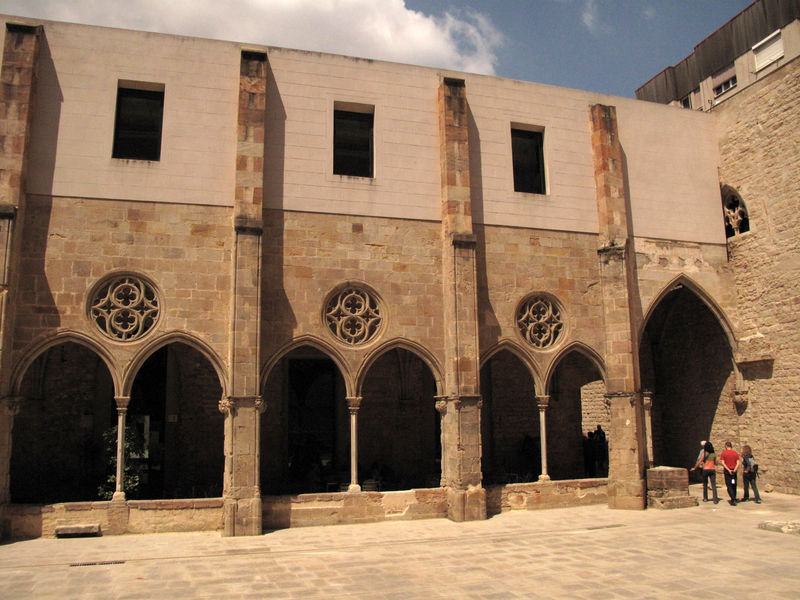
Barcelona’s cathedral
Although you should know that its spectacular façade was built in the late nineteenth century, the fact is that the cathedral dedicated to the Holy Cross and Santa Eulalia still retains its apse, radial chapel, crypt and Gothic style headboard, thus expanding the cathedral that had been built in Romanesque style. In its Gothic cloister, you can find the thirteen white geese that symbolize the age of the patron of Barcelona when she died.
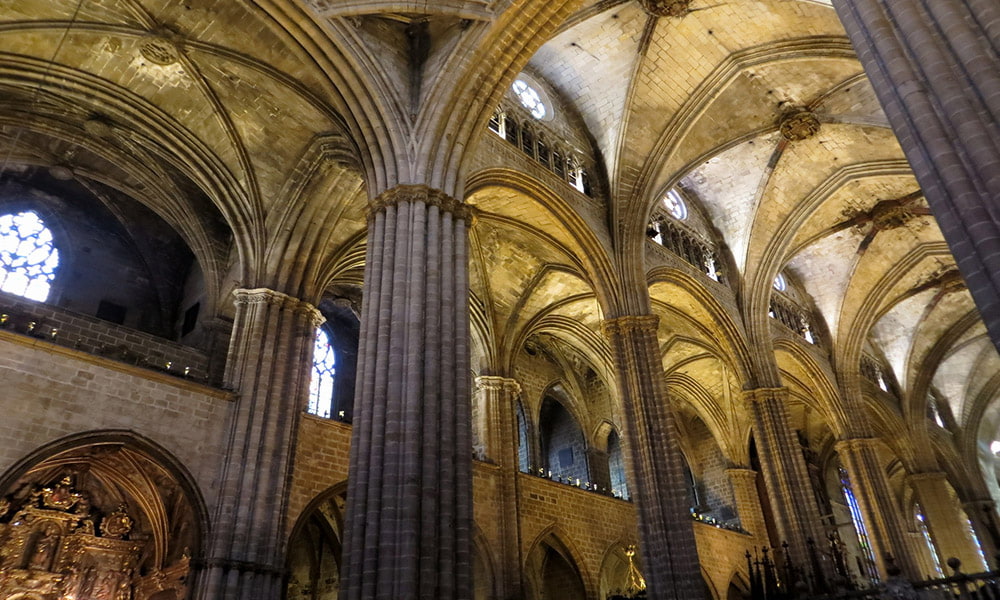
Basilica of Santa María del Mar
We finish this list of medieval churches with the crown jewel. Without a doubt, the Cathedral of the Sea (Catedral del Mar in Catalan) is one of the most spectacular constructions of Catalan Gothic that still stands. Built with stone from the mountain of Montjuïc, it was designed by Berenguer de Montagut and Ramon Despuig, but it is said that it was the common people from the Ribera neighborhood who helped to raise this monument.
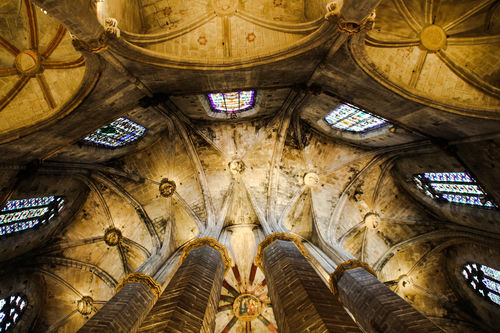
INSTITUTIONS OF MEDIEVAL BARCELONA
It’s not all churches on this tour of medieval Barcelona! Some institutional and civil buildings still stand as a reminder of what the Middle Ages represented for the city.
Former hospital of Sant Pau and Santa Creu
In the fifteenth century it was built in order to unite all the health centers of the city in a single complex and was inaugurated by king Martin the Humane (Martí l’Humà). Stroll calmly around its cloister to escape the hustle and bustle of Raval or visit the old Casa de Convalescència to admire one of the most beautiful libraries in the city. In addition, you should know that the architect Antoni Gaudí died in this hospital in 1926.
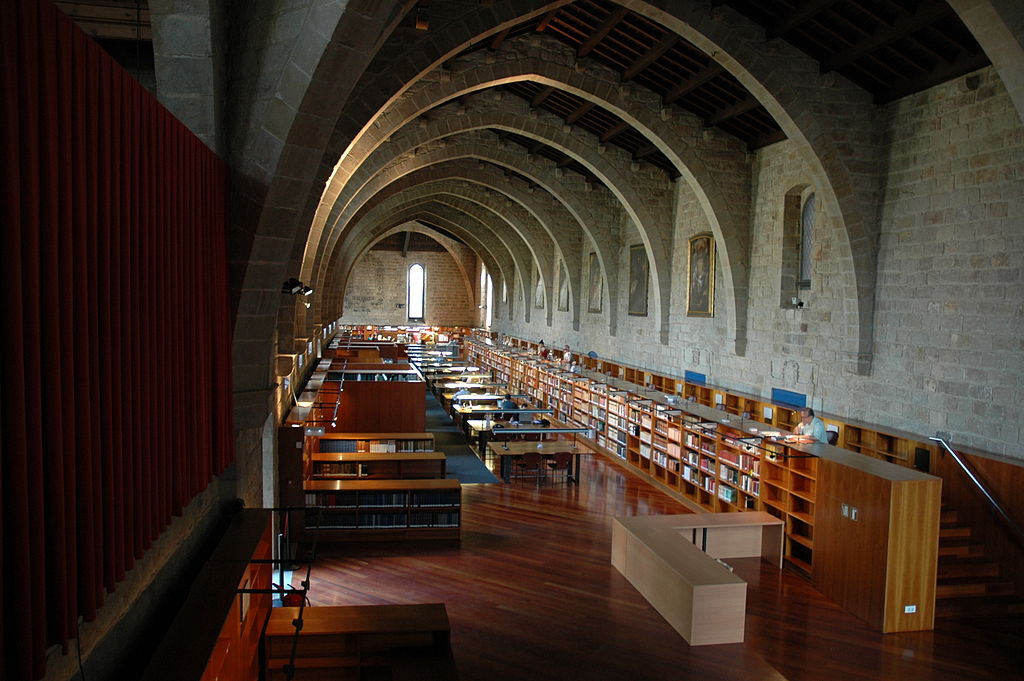
Drassanes Reials
The historical set of the royal shipyard from the fourteenth century is still glimpsed in the current structure, which is dated in the sixteenth century and in which they used the same Gothic structure due to the efficiency that the medieval building had shown.
Palau de la Generalitat
The building that houses the headquarters of the Catalan government was bought in 1400 by the Diputació General de Catalunya, at which time they began to incorporate other adjoining buildings. Although both the façade of the current building and some of its elements date back to the Renaissance period, the Sant Jordi chapel, the facade of carrer de Sant Honorat, the Gothic courtyard, the staircase and the Sant Jordi relief in carrer del Bisbe are in fact medieval.
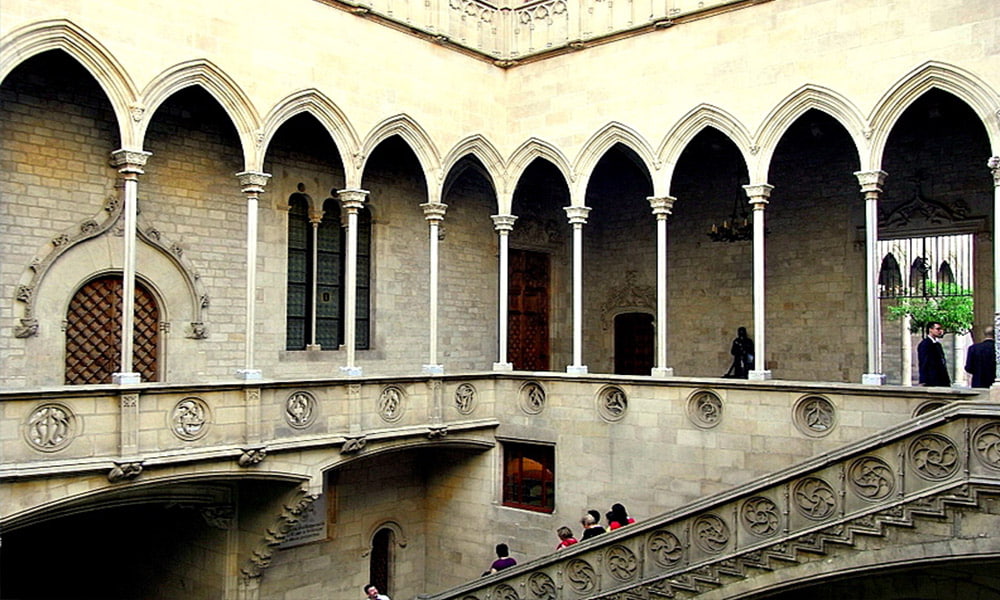
Barcelona City Council
In front of the Generalitat de Catalunya we find this building that was initially occupied by the Council of One hundred (Consell de Cent), institution that governed the city in the thirteenth century, at which time they began to build what would be the House of the City of Barcelona. The Gothic style of the building can still be seen in the Gothic façade on carrer de la Ciutat and the inner courtyard, in which some Renaissance elements are already peeking. In its interior, the Gothic gallery and the Saló de Cent are also preserved, although it was partially remodeled in baroque style.
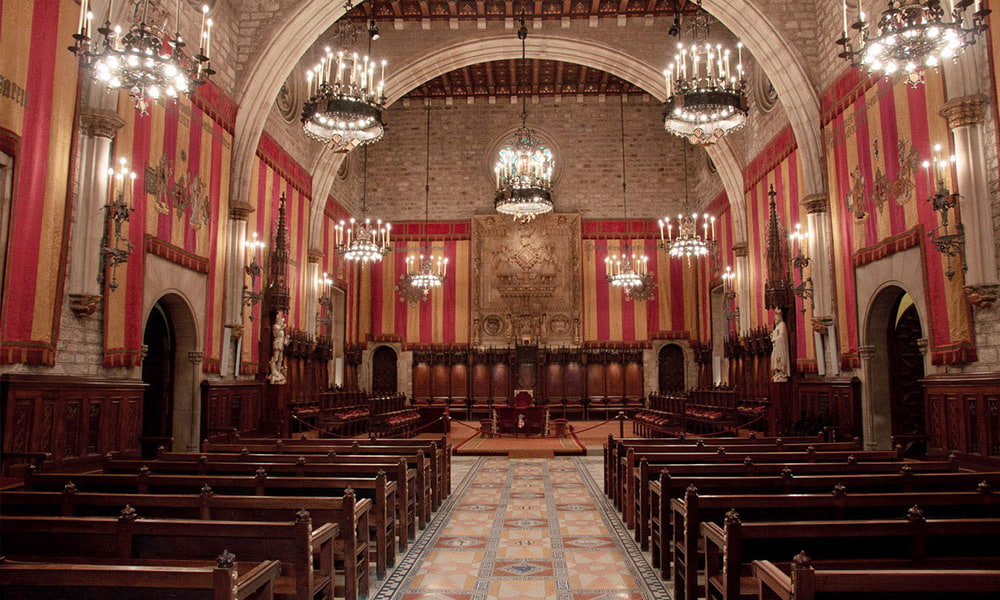
La Llotja
Another medieval building that has undergone several architectural changes with the passage of time is the Barcelona fish market. Located in Pla de Palau, it was built to supply the expansion of Catalan commerce in the fourteenth century. The Gothic room is the only thing that remains of the time, since the building was remodelled in neoclassical style in 1774.
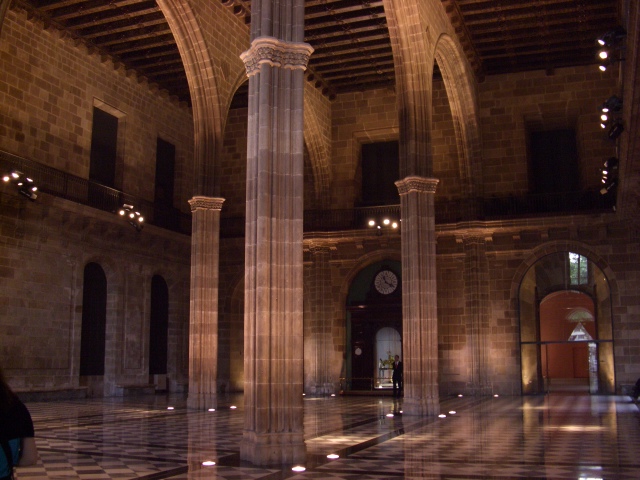
Now that you have all the information you need, you can start your tour of medieval Barcelona. We would also like you to tell us which buildings you have visited and which ones you have found most beautiful. In this way you can help our users to create their own map of visits to the medieval city, so do not hesitate and comment below.
MORE INTERESTING STUFF
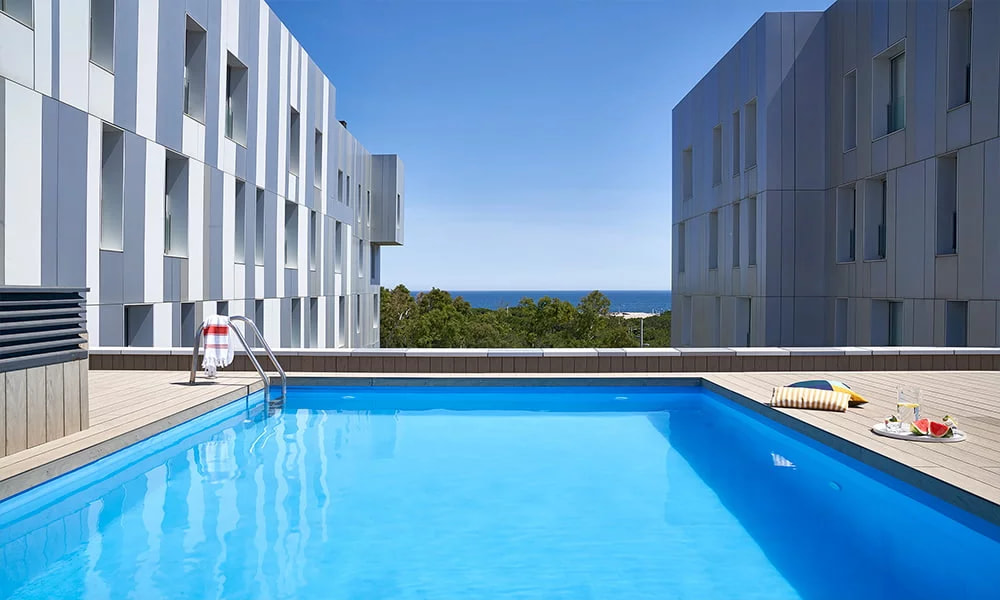
Holiday apartments by the beach in Barcelona
Since 2010, Lugaris Apartaments has been offering you the best holiday rental flats in Barcelona, perfect for a family holiday, with friends or as a couple, or for medium-term stays.
You can choose between apartments near the beach in Barcelona, at Lugaris Beach, with sea views, 2 swimming pools (one for adults and one for children) and capacity for up to 6 people, and the Lugaris Rambla flats, located on the Rambla de Poblenou and just 300 m from Bogatell beach, with a balcony or terrace of up to 22 m2 and ideal for couples or families and groups of up to 5 people. All our luxury flats in Barcelona are air-conditioned and equipped with all the appliances, furniture and bed linen you will need during your stay. They also have satellite TV and free high-speed Wi-Fi connection, as well as a safe and a 24-hour private security service.
What’s more, when you make your booking, you can reserve many other additional services: international press in your flat, parking space, transfer service to and from Barcelona airport, bicycle hire, supermarket shopping, museum, sports and show tickets, babysitting service and much more.
For more information, contact Lugaris Apartments without obligation.

